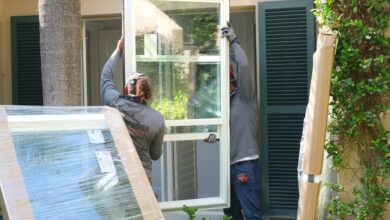
Introduction
The Baltimore Ravens’ season took an unexpected turn as reports confirm that their star cornerback, Marcus Peters, has torn his ACL. As a crucial player in the Ravens’ secondary, Peters’ loss is a significant blow to the team’s defensive strength and playoff hopes. The report of this devastating injury has sparked discussions among fans, analysts, and the Ravens organization about the impact on the Ravens’ defensive strategy, the timeline for Peters’ recovery, and how the team will adapt without one of their top defenders. This article provides an in-depth look at Marcus Peters’ role, the implications of his torn ACL, and what the Ravens can do to mitigate this major setback.
The Importance of Marcus Peters in the Ravens’ Defense
Since joining the Baltimore Ravens in 2019, Marcus Peters has become a cornerstone of the team’s defensive lineup. Known for his quick instincts, ball-hawking skills, and ability to read plays, Peters has delivered consistently high performance, tallying 32 interceptions over his career. His presence on the field has helped the Ravens’ defense thrive, adding a layer of unpredictability that forces opposing quarterbacks to be cautious in their throws.
Peters’ role extends beyond physical play; his experience and field vision also provide leadership, guiding younger players and setting an example in high-stakes moments. The Ravens’ defensive coordinator has designed strategies that allow Peters to capitalize on his instinctual play, creating a dynamic defense with him as a primary asset.
Details of the Injury and Its Implications
The news that Ravens CB Marcus Peters has torn his ACL came as a shock, especially considering the injury occurred during a non-contact practice session. Non-contact injuries are often due to sudden shifts or abrupt stops, both common actions for a cornerback. ACL injuries are severe, with a recovery process that can take anywhere from nine months to a year, depending on individual factors and rehabilitation success.
With the ACL tear, Peters will undergo reconstructive surgery and an extensive recovery period, likely sidelining him for the entire season. For a player in the cornerback position, where knee stability and agility are crucial, such an injury can impact speed, reaction times, and movement on the field. Given the impact this has on Peters’ future performance, the Ravens will need to plan their defensive strategy carefully and assess their lineup to compensate for his absence.
Impact on the Ravens’ Season and Defensive Strategy
The report confirming Ravens CB Marcus Peters has torn his ACL signifies a major challenge for the Ravens’ season outlook. Peters’ injury affects more than just the roster—it alters the dynamic of the team’s overall defensive strategy. Without one of their most reliable players in the secondary, the Ravens must rethink their approach to defensive coverage and personnel deployment.
One immediate response may involve moving Marlon Humphrey, another top-performing cornerback, into a more central role. Humphrey has proven his skills on the field, and his ability to adjust to various coverage positions could provide a solution to the gap left by Peters. Additionally, the Ravens may consider bringing up players from the practice squad or even looking at trade options to add depth to their secondary.
The Ravens’ playoff aspirations may be affected, as Peters’ knack for creating turnovers is a critical component of their defense. Turnovers shift momentum in games, and without Peters’ aggressive playstyle, the Ravens could struggle to maintain the same level of defensive intensity against strong offensive teams. Coaches and team analysts will be working to adjust the defensive playbook, incorporating new coverage schemes and possibly emphasizing a more zone-heavy approach to compensate for the absence of their top cornerback.
Marcus Peters’ Road to Recovery
Recovering from an ACL tear is a rigorous and time-intensive process. Peters will begin with reconstructive surgery, followed by a gradual rehabilitation program. The first stage of ACL recovery focuses on restoring knee flexibility and strength, while managing pain and reducing swelling. As Peters progresses, he will work on regaining stability and range of motion in his knee, followed by strengthening exercises tailored to the unique demands of a professional athlete.
For a player with Marcus Peters’ speed and agility, returning to peak performance requires a well-planned recovery program that emphasizes not only physical rehabilitation but also mental resilience. Studies show that athletes returning from ACL injuries may experience apprehension about reinjury, which can affect their confidence on the field. The Ravens organization will be closely involved, providing Peters with access to top-tier medical staff and training facilities to support his recovery.
Despite the challenges, several NFL players have successfully returned to high-level play after an ACL injury, including Adrian Peterson and Rob Gronkowski. While there are no guarantees, Peters has the benefit of sports medicine advances that can improve recovery outcomes. His comeback, however, may require time and a gradual reintroduction to competitive play.
What This Means for the Future of the Ravens’ Defense
Looking forward, the Ravens face a season without one of their defensive stars, and this may have broader implications for their long-term roster planning. As Peters works toward recovery, the team may consider recruiting younger players who can fill his role temporarily, or even long-term, in case Peters’ injury impacts his performance after recovery.
The loss of Marcus Peters also underscores the need for depth within the Ravens’ secondary. To maintain a competitive edge, the team could explore signing an experienced free agent or making strategic trades to bolster their defense. They may even consider investing in defensive back talent during the upcoming draft, given that Peters’ injury highlights the risks associated with limited depth in key positions.
The Ravens’ coaching staff, known for its adaptability, will likely implement strategies to accommodate this change. This may involve using more zone coverage to limit exposure in man-to-man matchups or positioning safeties closer to the line of scrimmage to cover the area Peters would typically dominate. Adjustments to the playbook will be essential as the team adapts to this season-long change.

Frequently Asked Questions (FAQs)
- How long will Marcus Peters be out due to his torn ACL?
- A torn ACL generally requires a 9-12 month recovery period, making it unlikely for Peters to return this season. Recovery times can vary based on individual healing and rehabilitation progress.
- Who will replace Marcus Peters in the Ravens’ lineup?
- Potential replacements may include Marlon Humphrey, who could take on a more central role, along with other players from the roster. The Ravens may also consider trades to bring in additional support.
- How common is ACL injury among NFL players?
- ACL injuries are relatively common due to the high-impact nature of football. In recent years, sports medicine advancements have improved recovery outcomes, but the injury remains serious, especially for positions requiring agility.
- What are the long-term effects of an ACL tear for an athlete?
- While many athletes make full recoveries, ACL tears can sometimes lead to decreased agility or increased injury risk. A player’s dedication to rehabilitation and recovery often influences their return to full performance.
- How has the Ravens’ defense historically performed without key players?
- The Ravens are known for their depth and resilience, but missing a player like Peters will present a significant challenge. The coaching staff is expected to adapt defensive strategies to mitigate the impact of his absence.
Conclusion
The Report: Ravens CB Marcus Peters Has Torn ACL is a pivotal moment in the team’s season. Peters’ injury removes a dynamic playmaker from the Ravens’ defense, leaving a considerable gap that will require strategic adjustments. As Peters embarks on the road to recovery, the Ravens are tasked with finding ways to compensate for his absence, whether through internal promotions or external acquisitions. Fans and analysts alike will be watching closely as the Ravens work to maintain their defensive strength and pursue their playoff ambitions in the face of this adversity.




